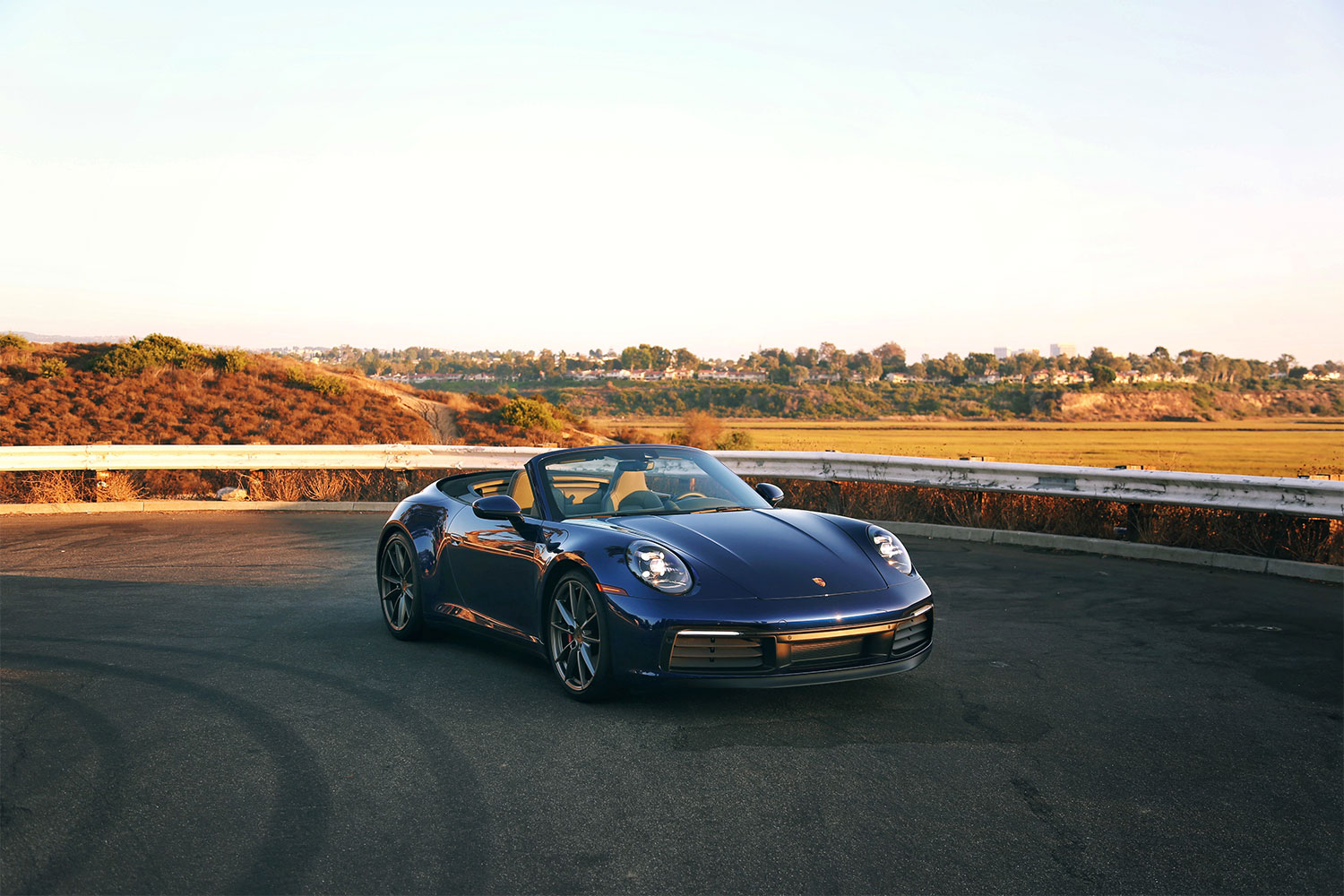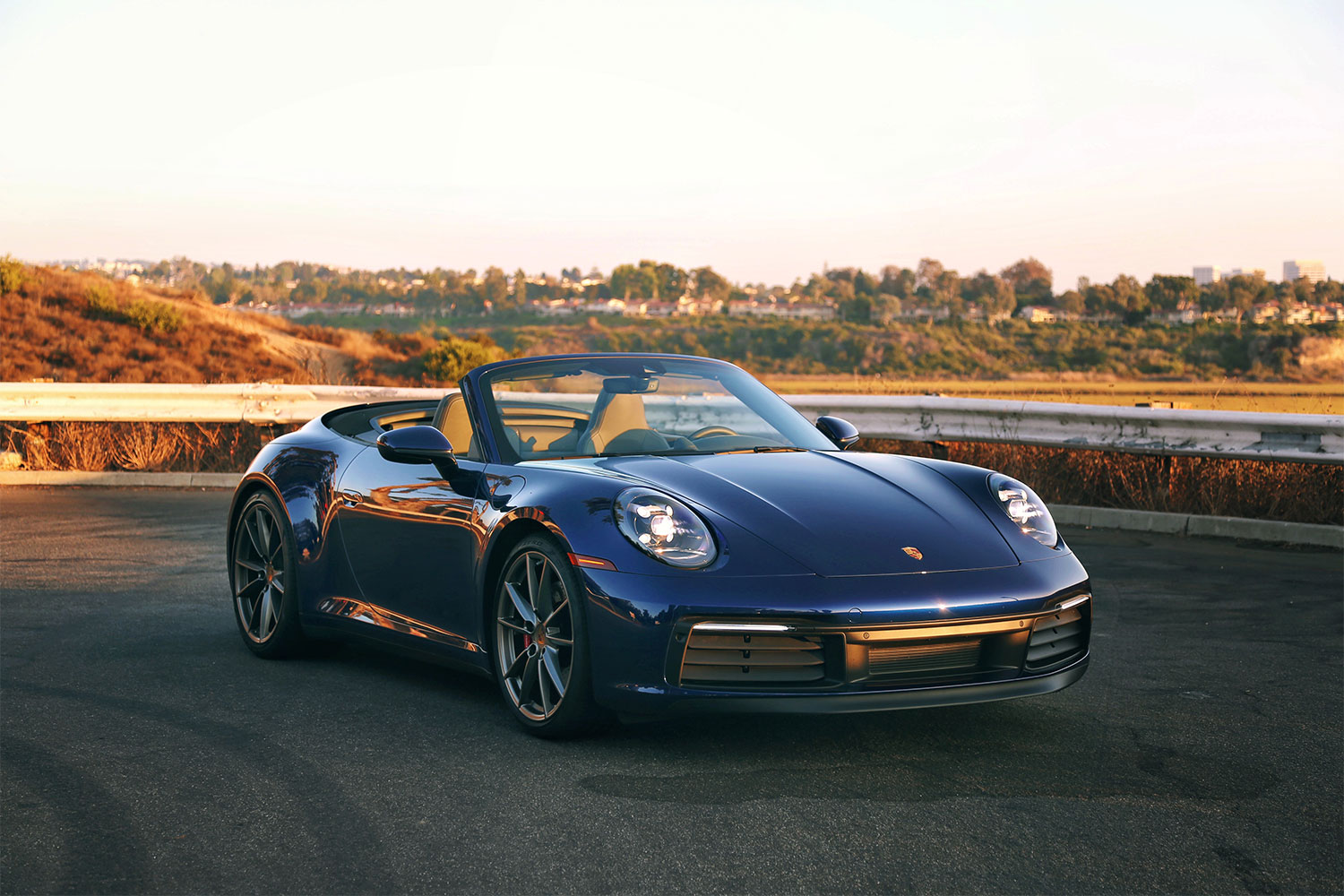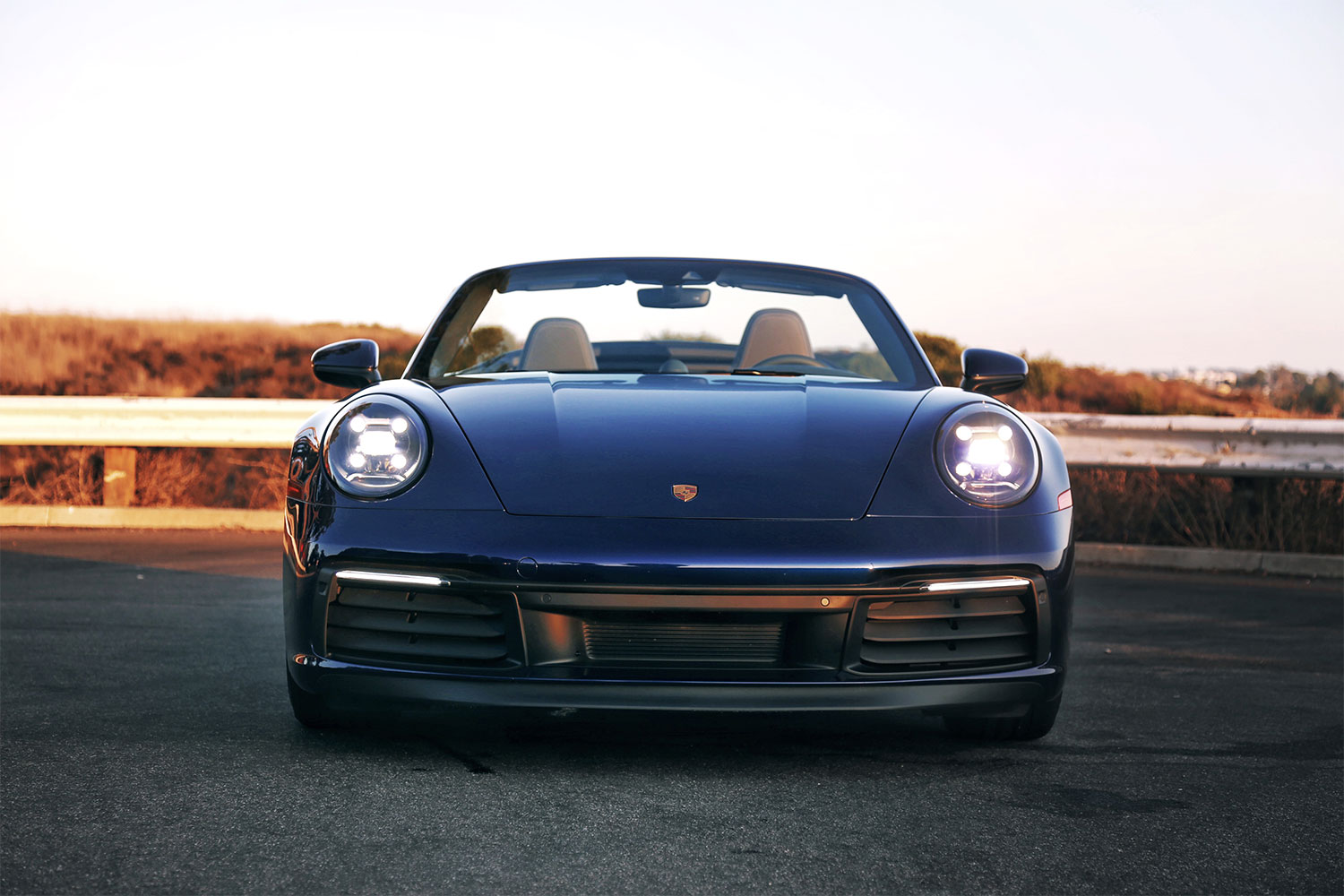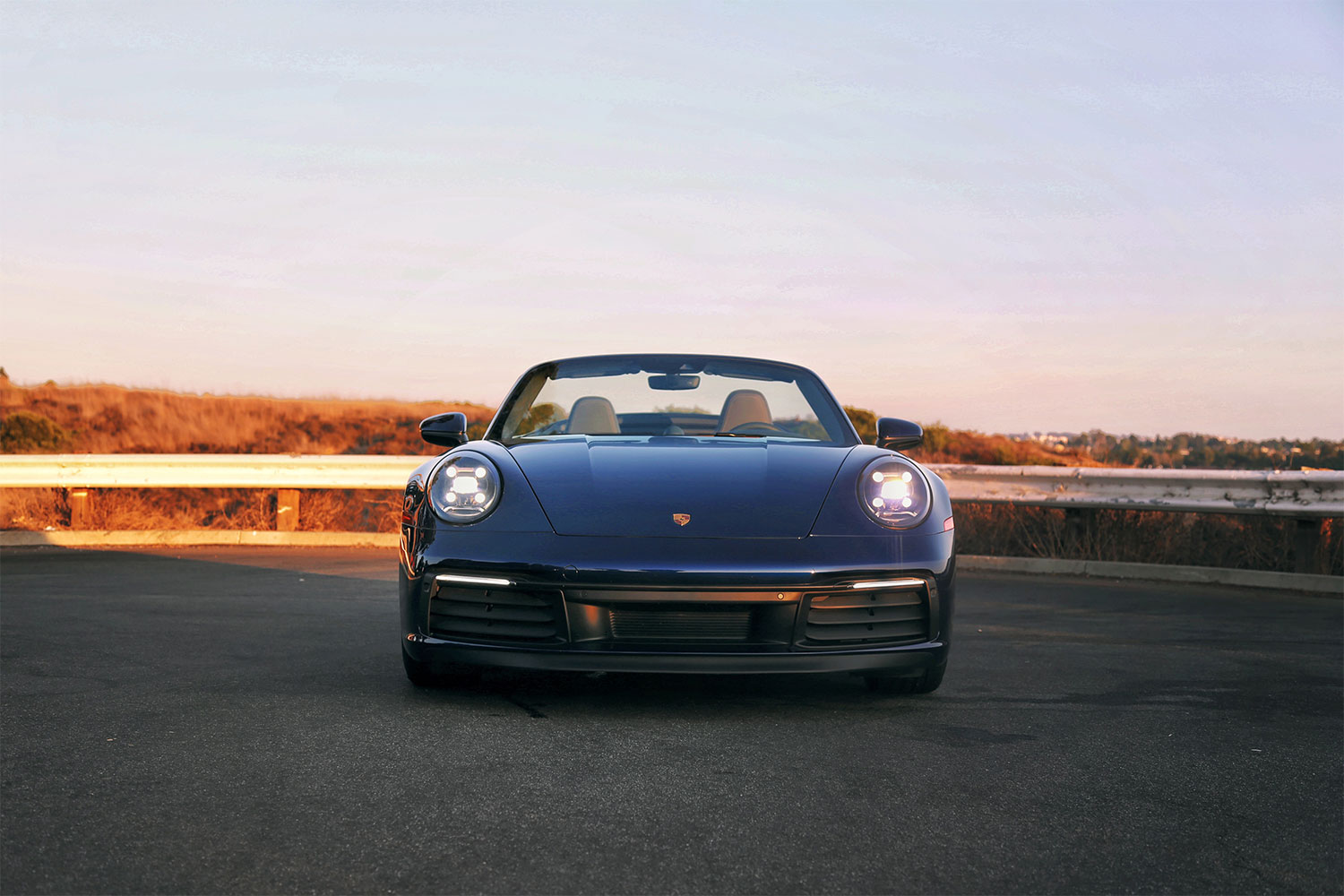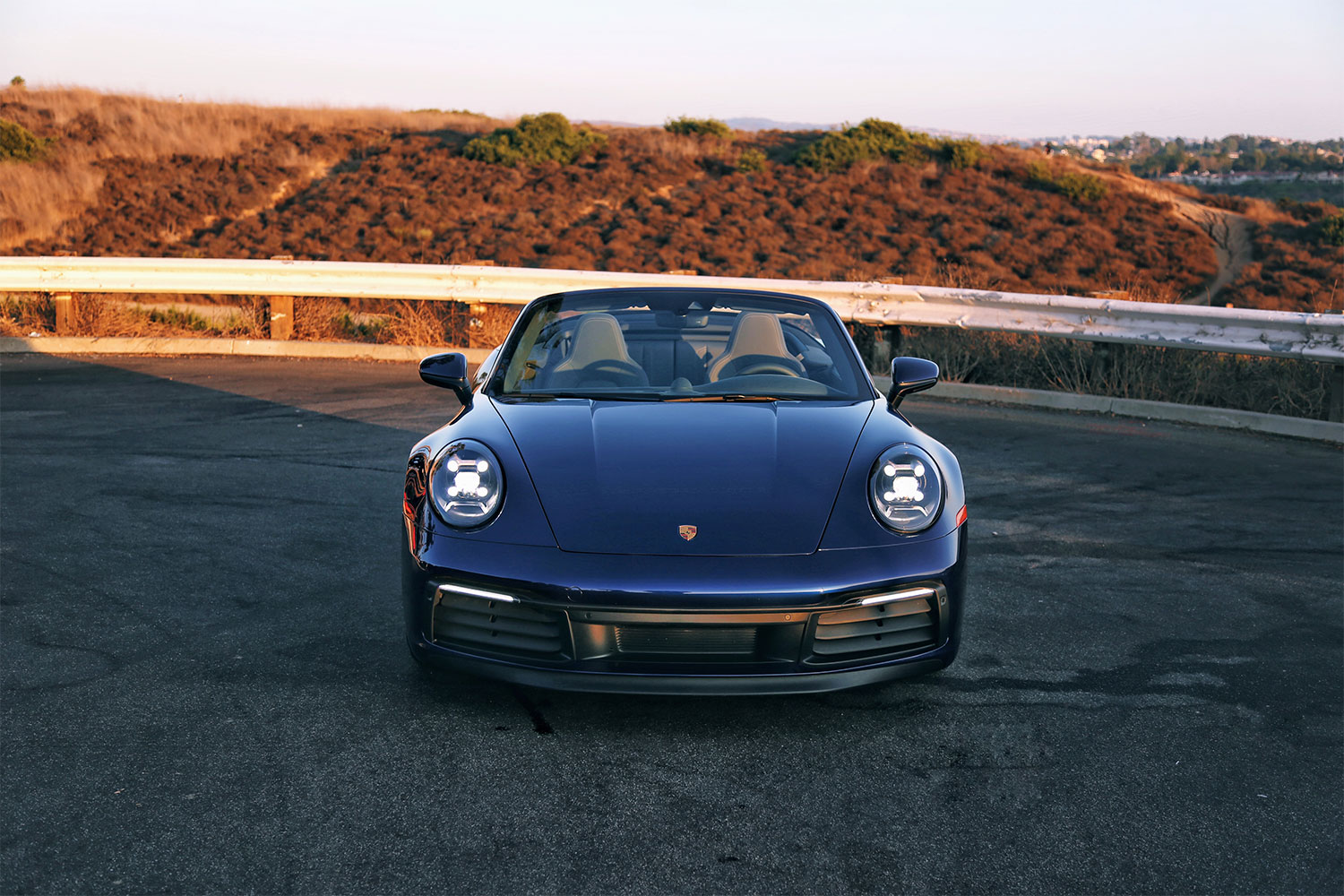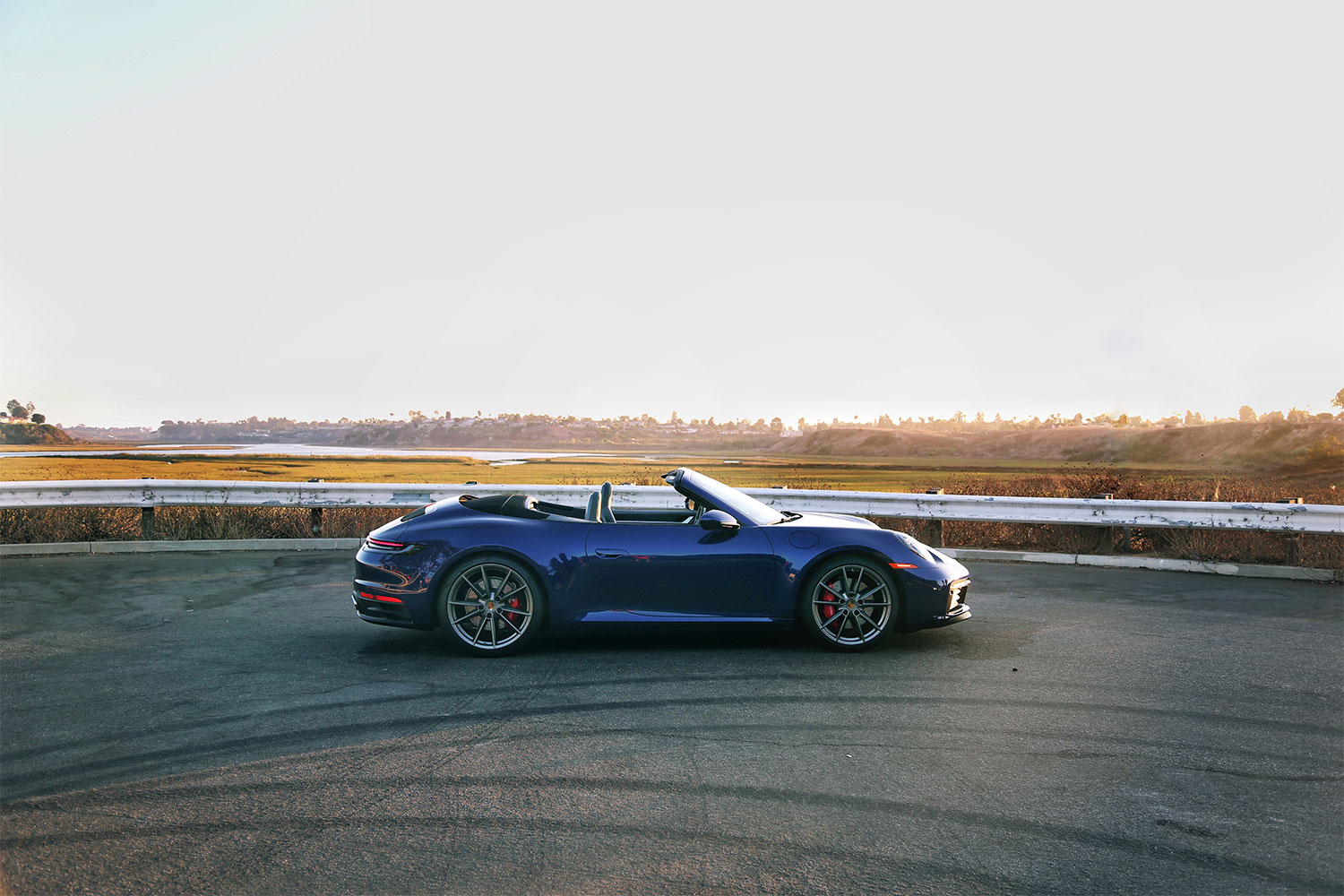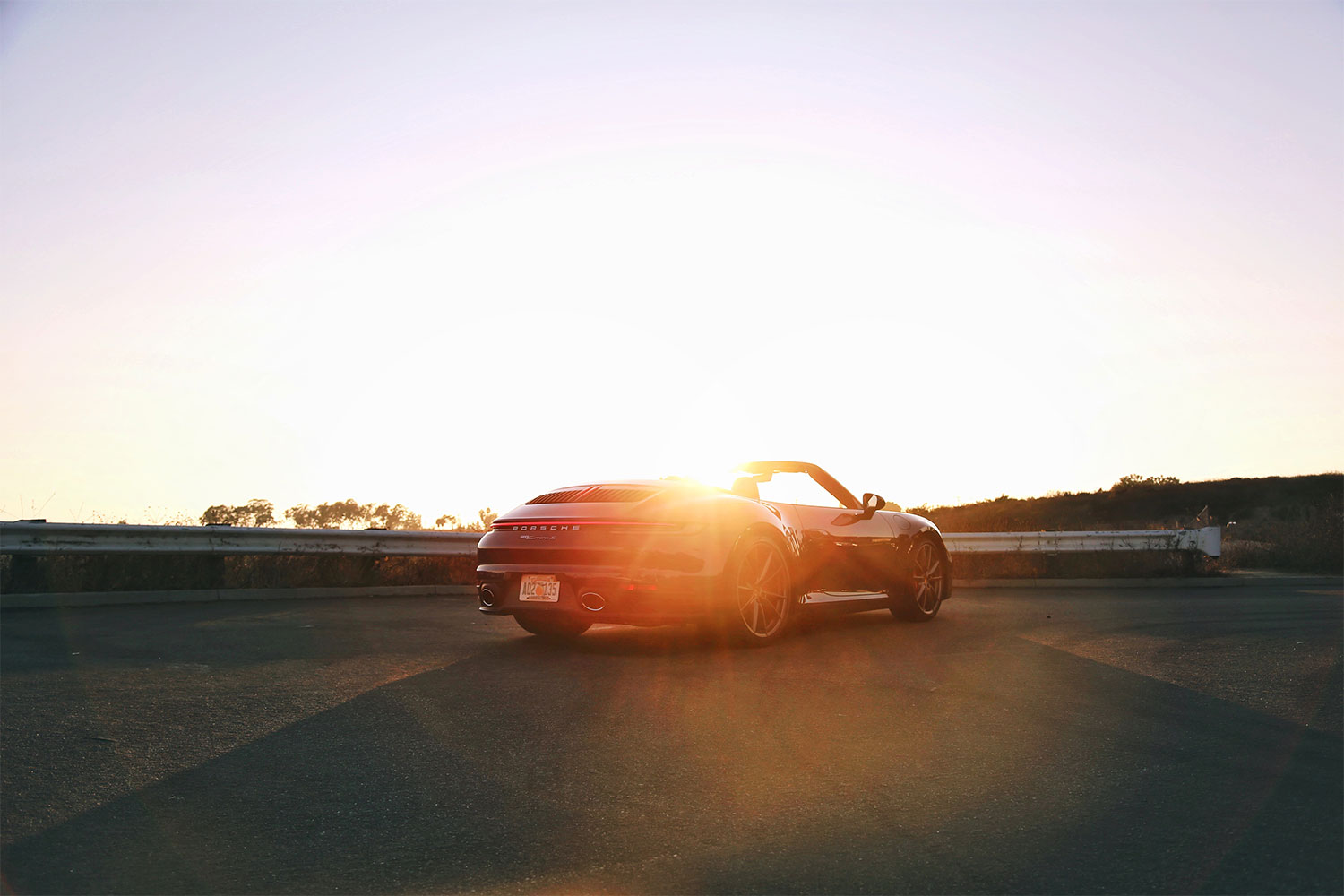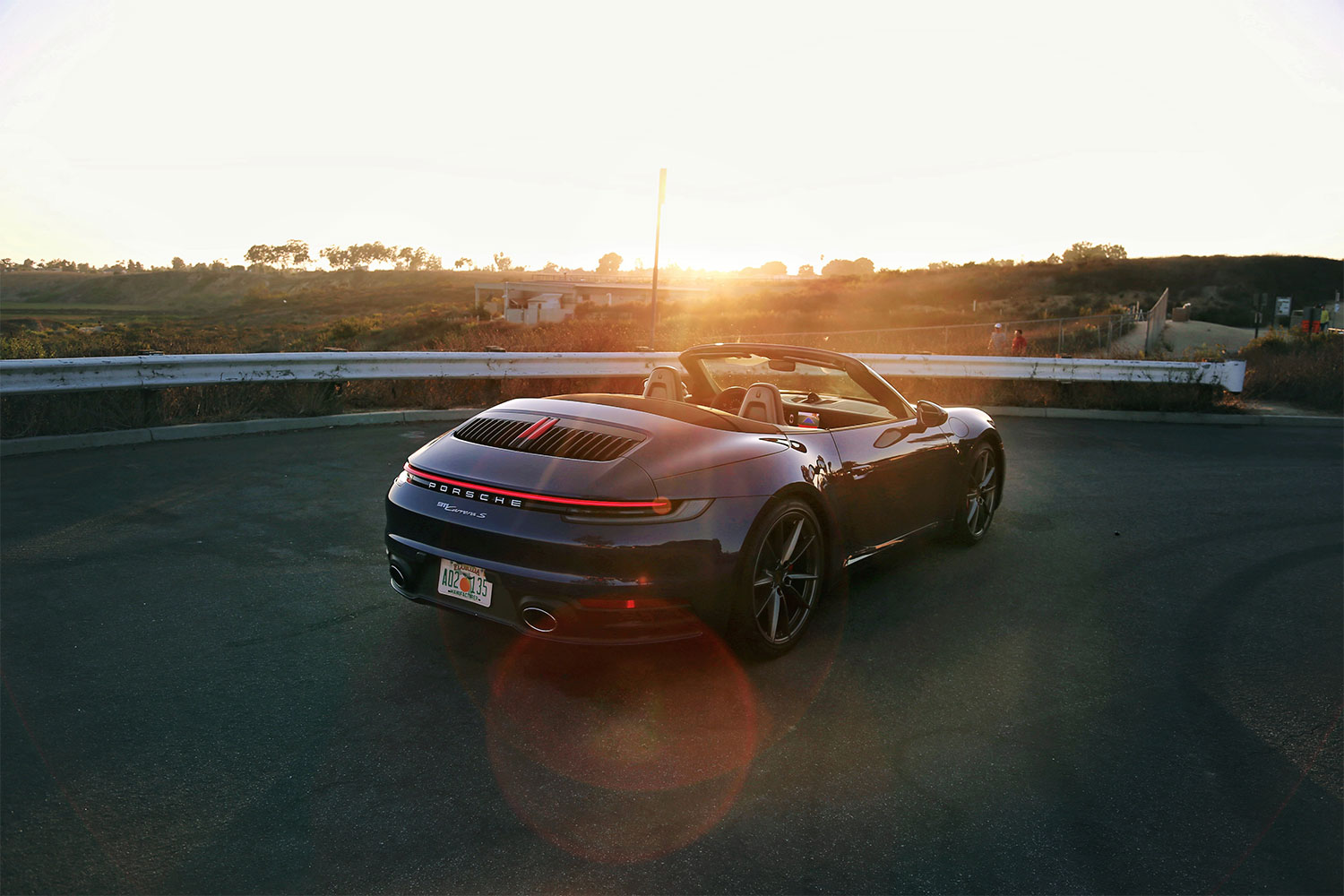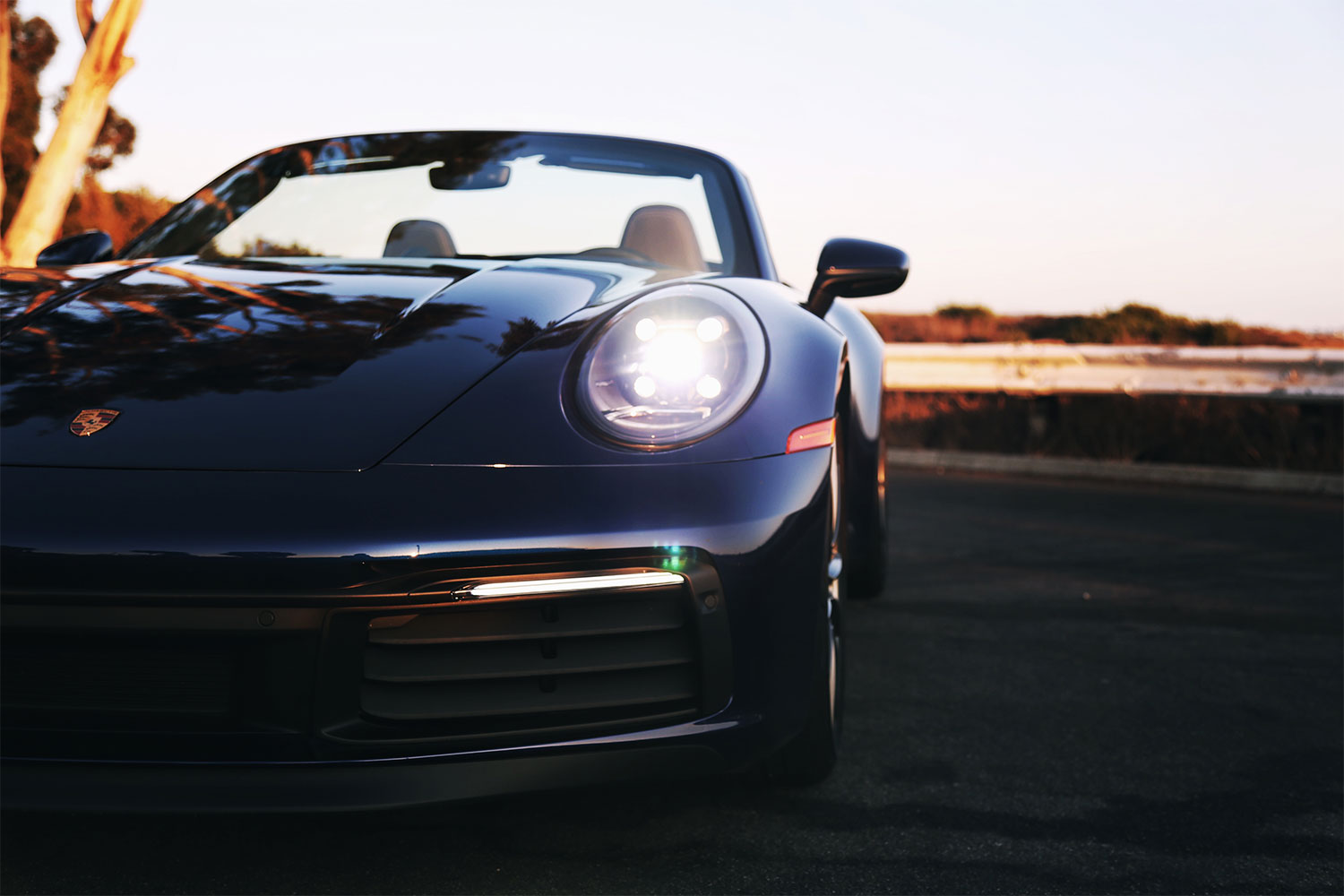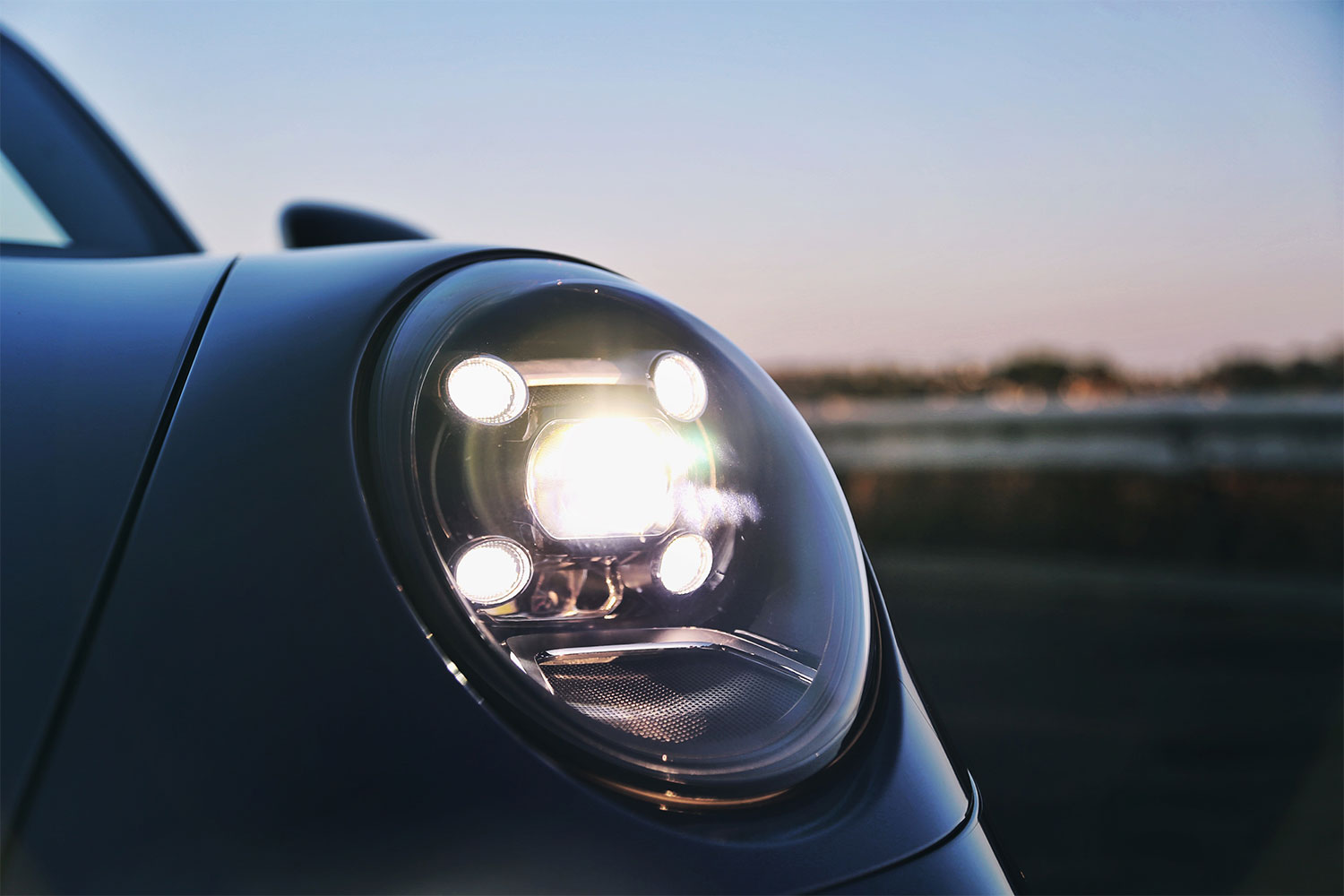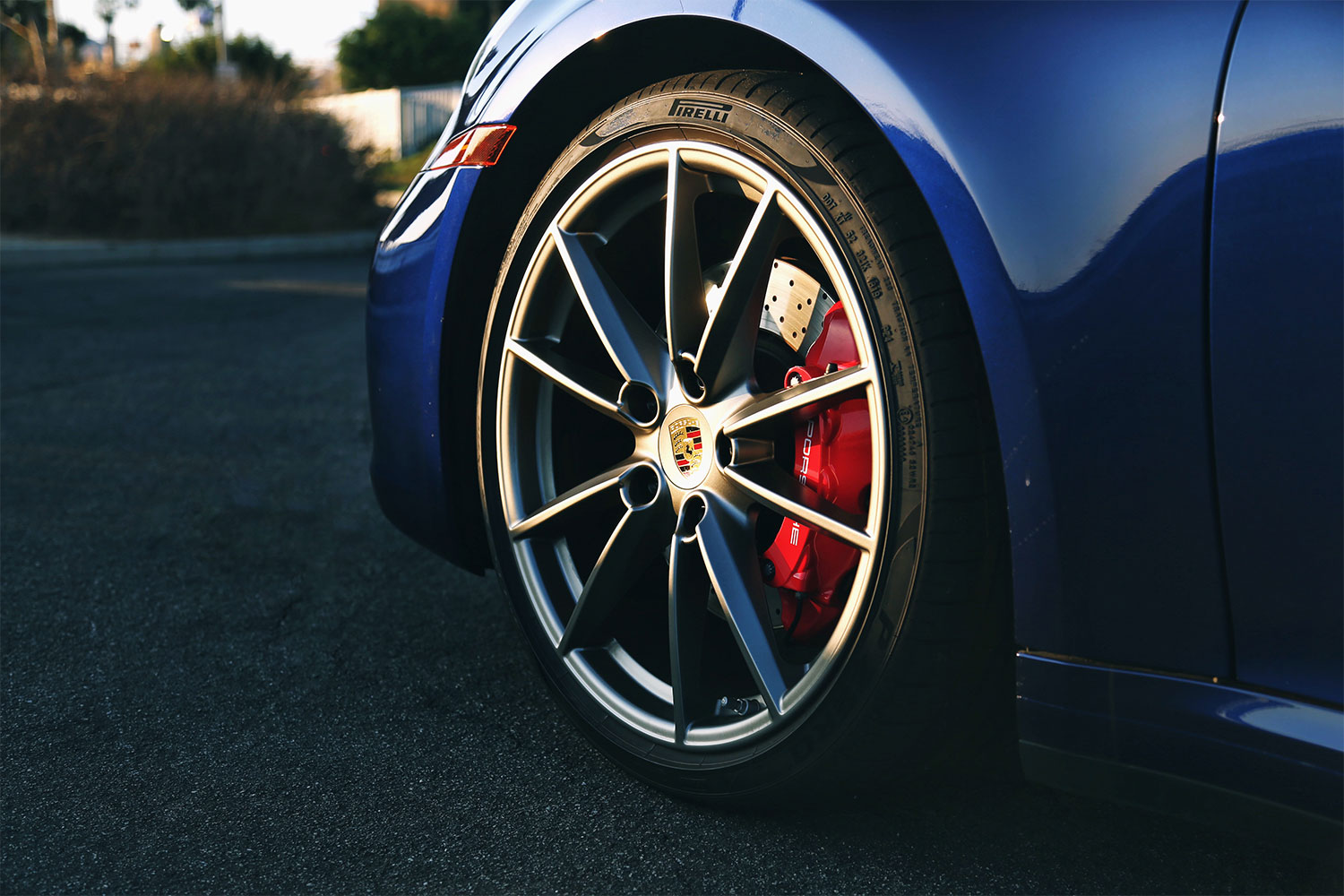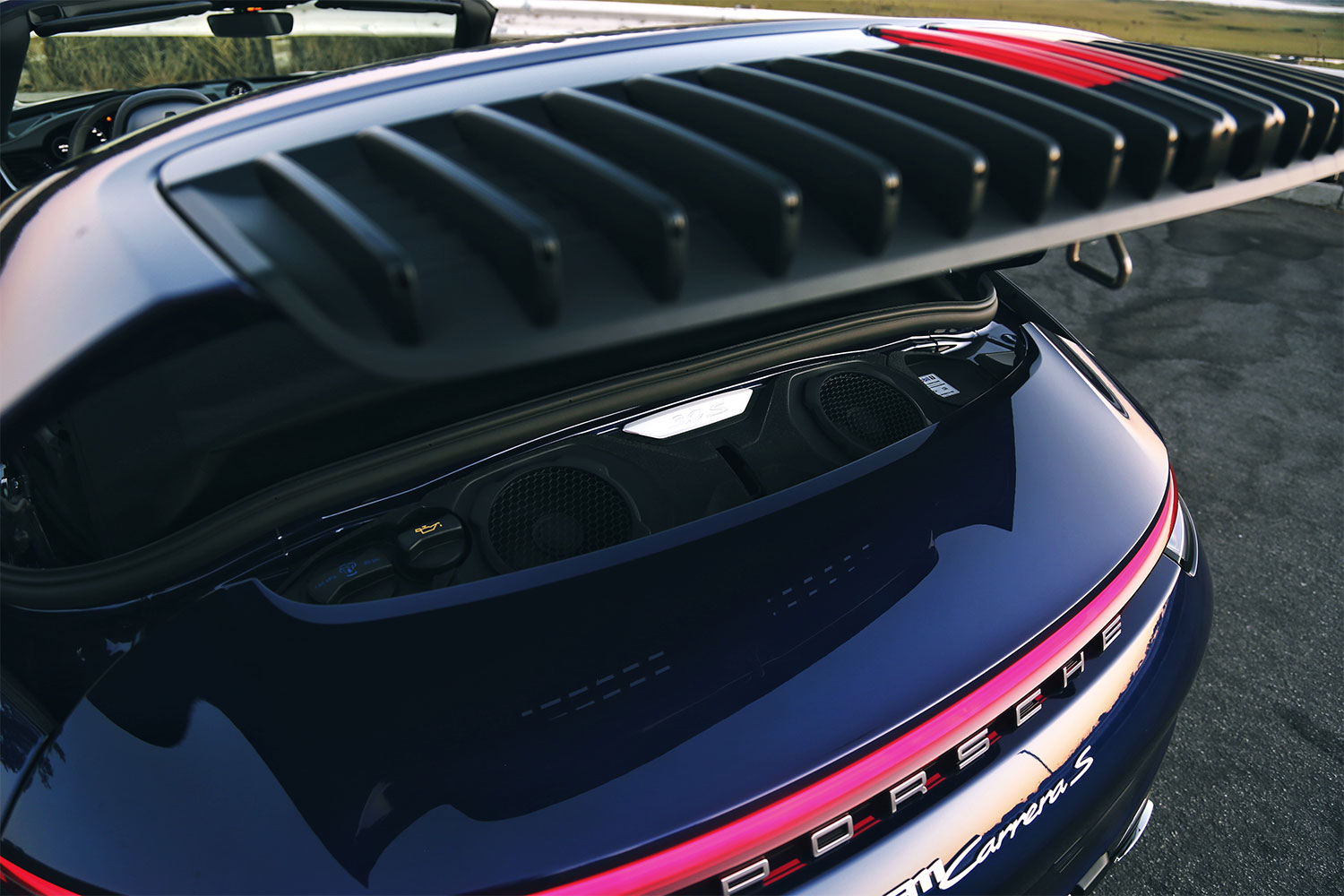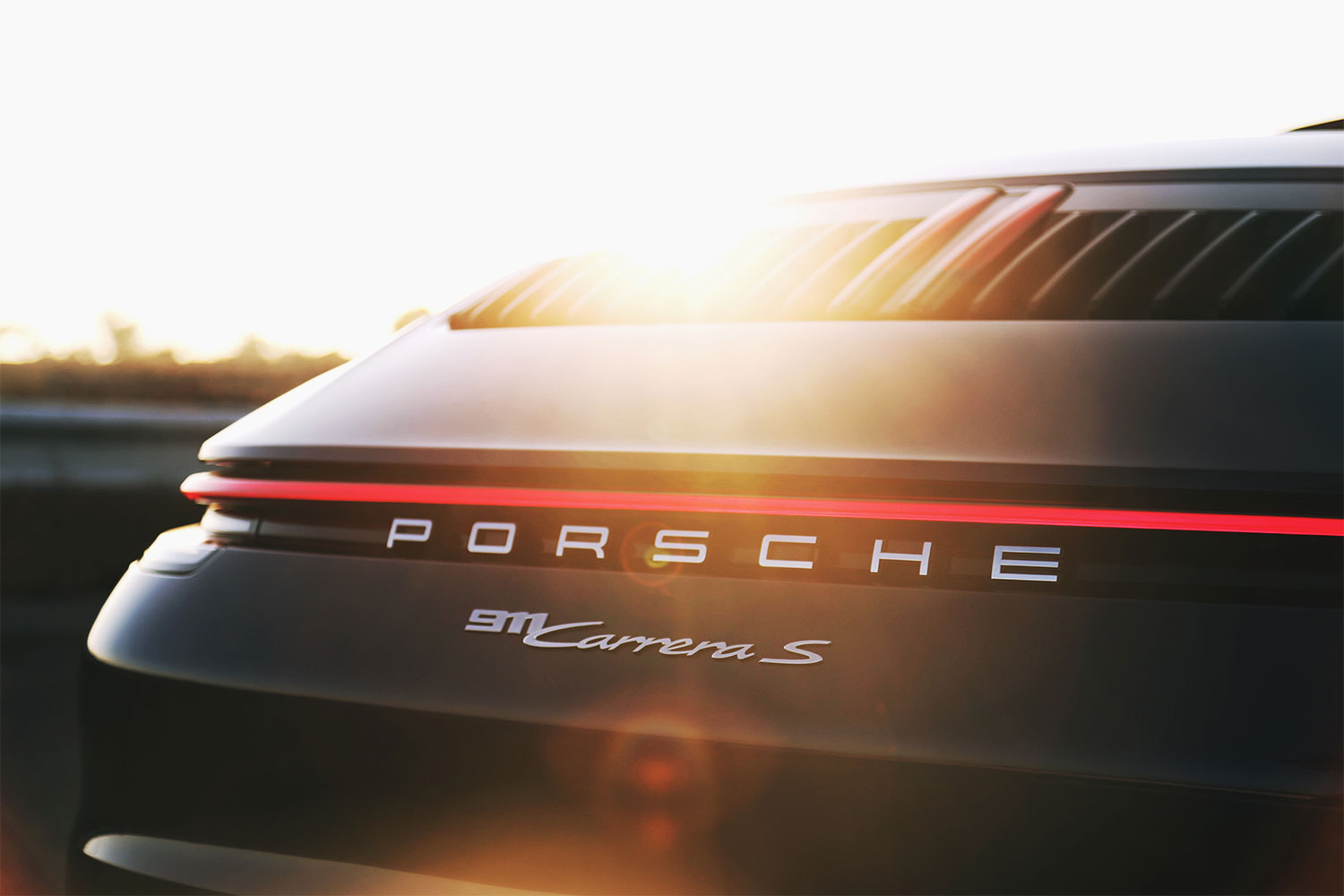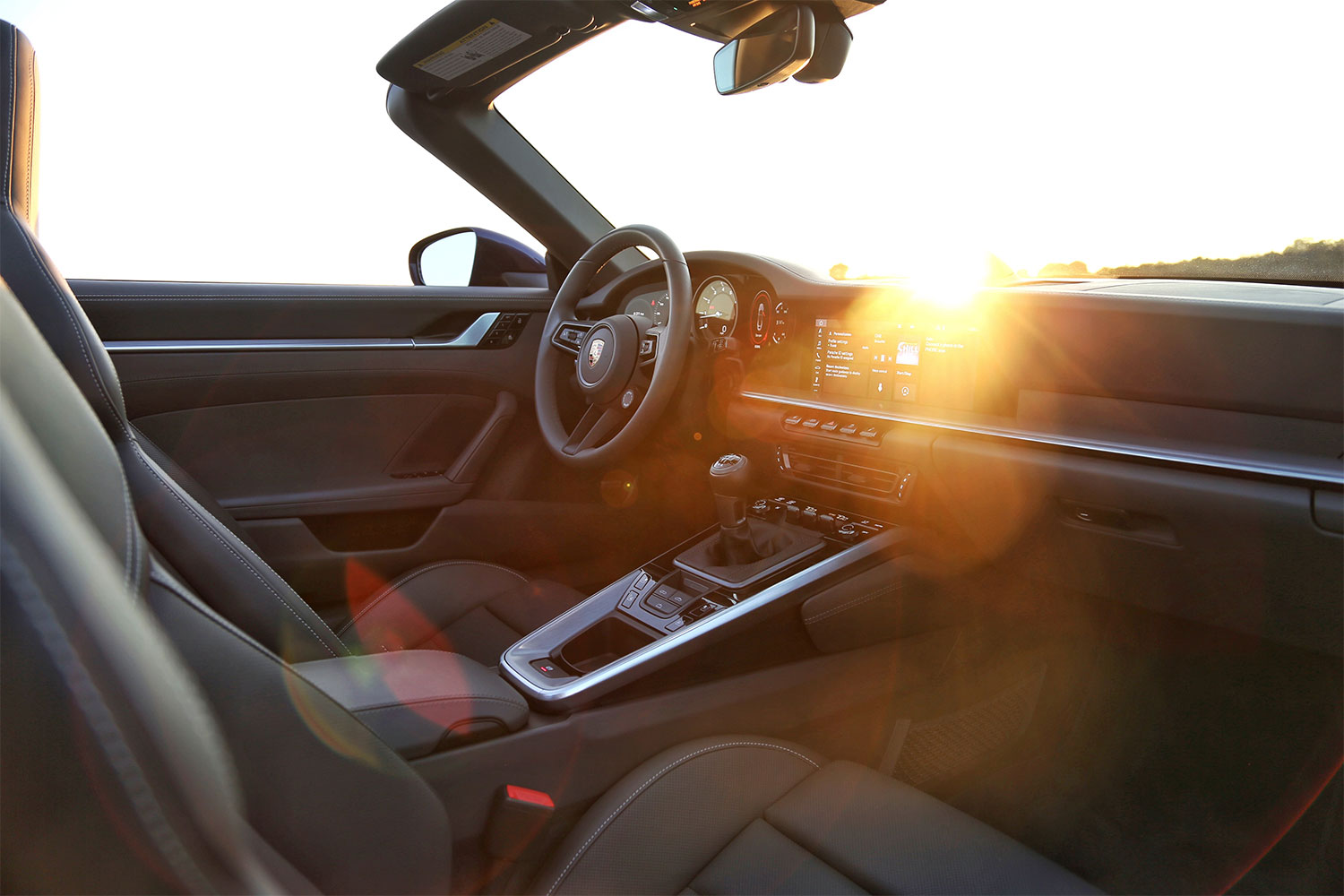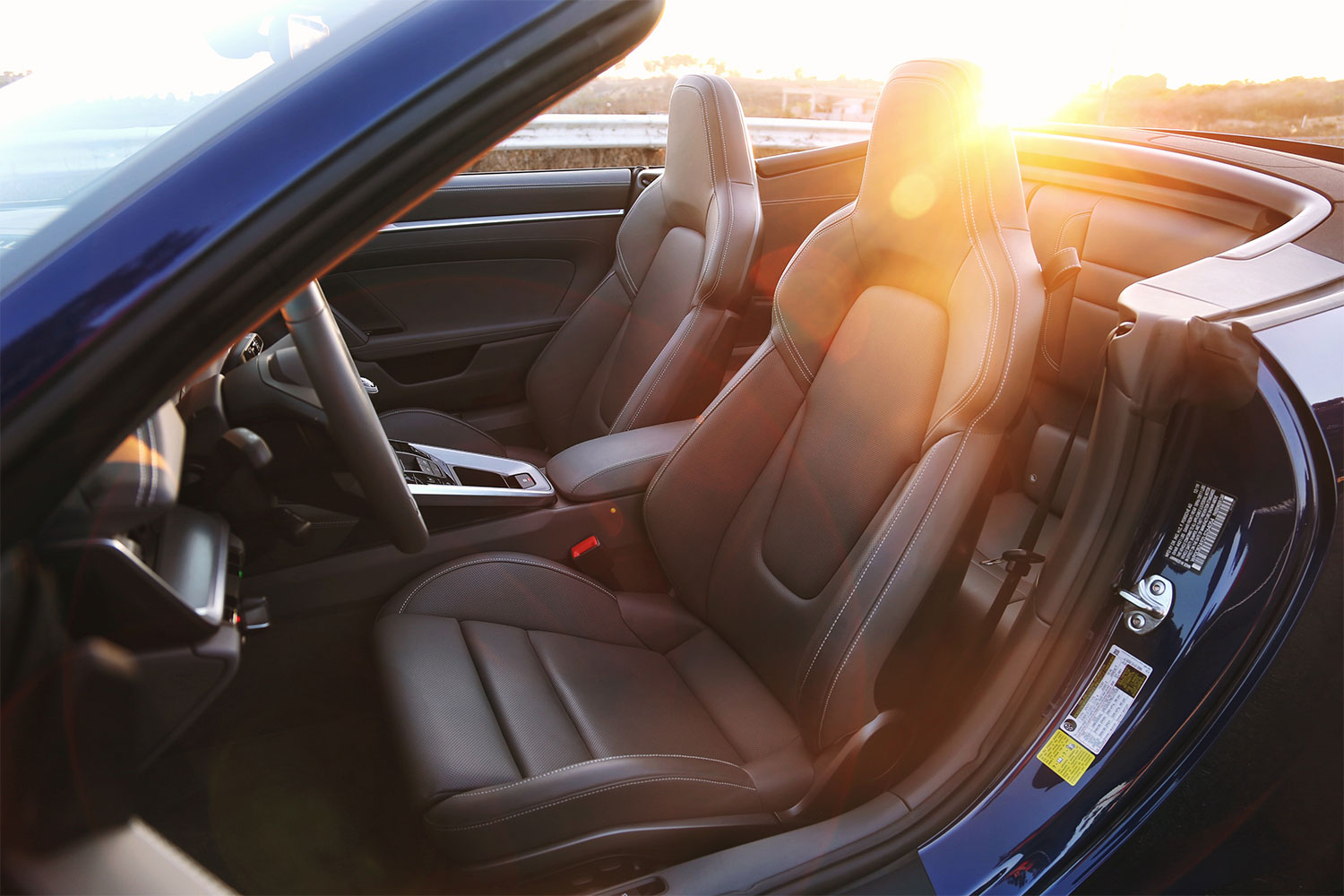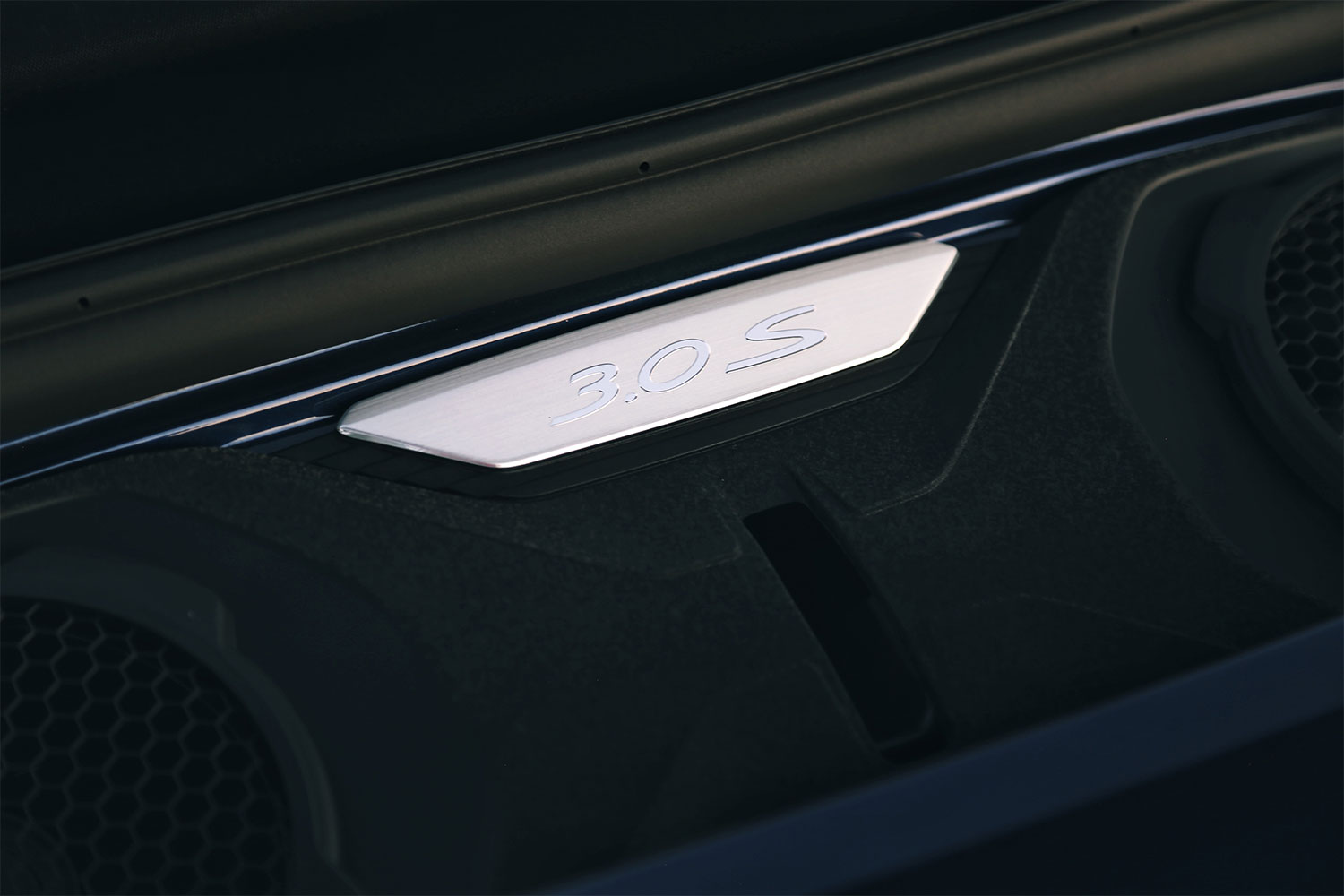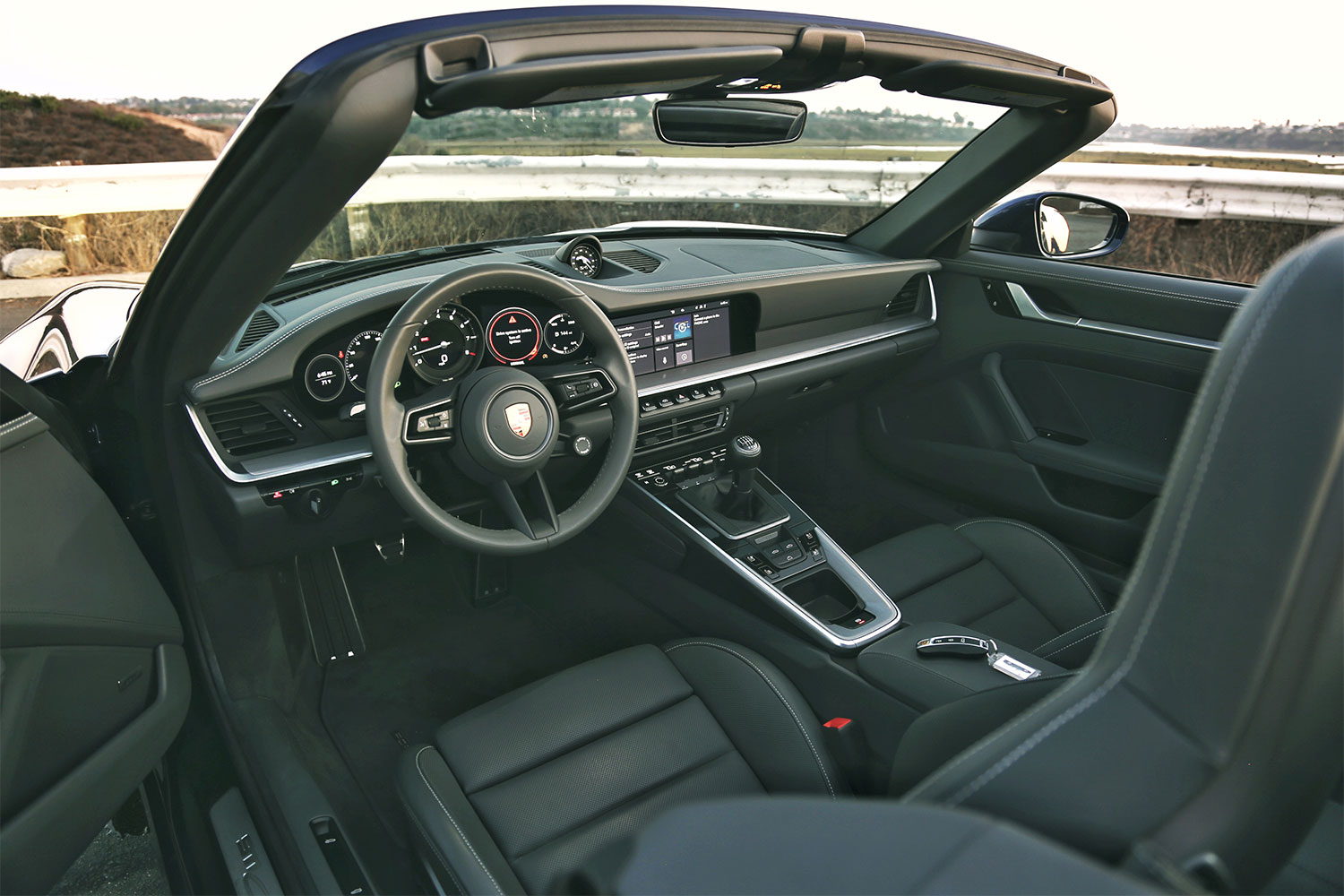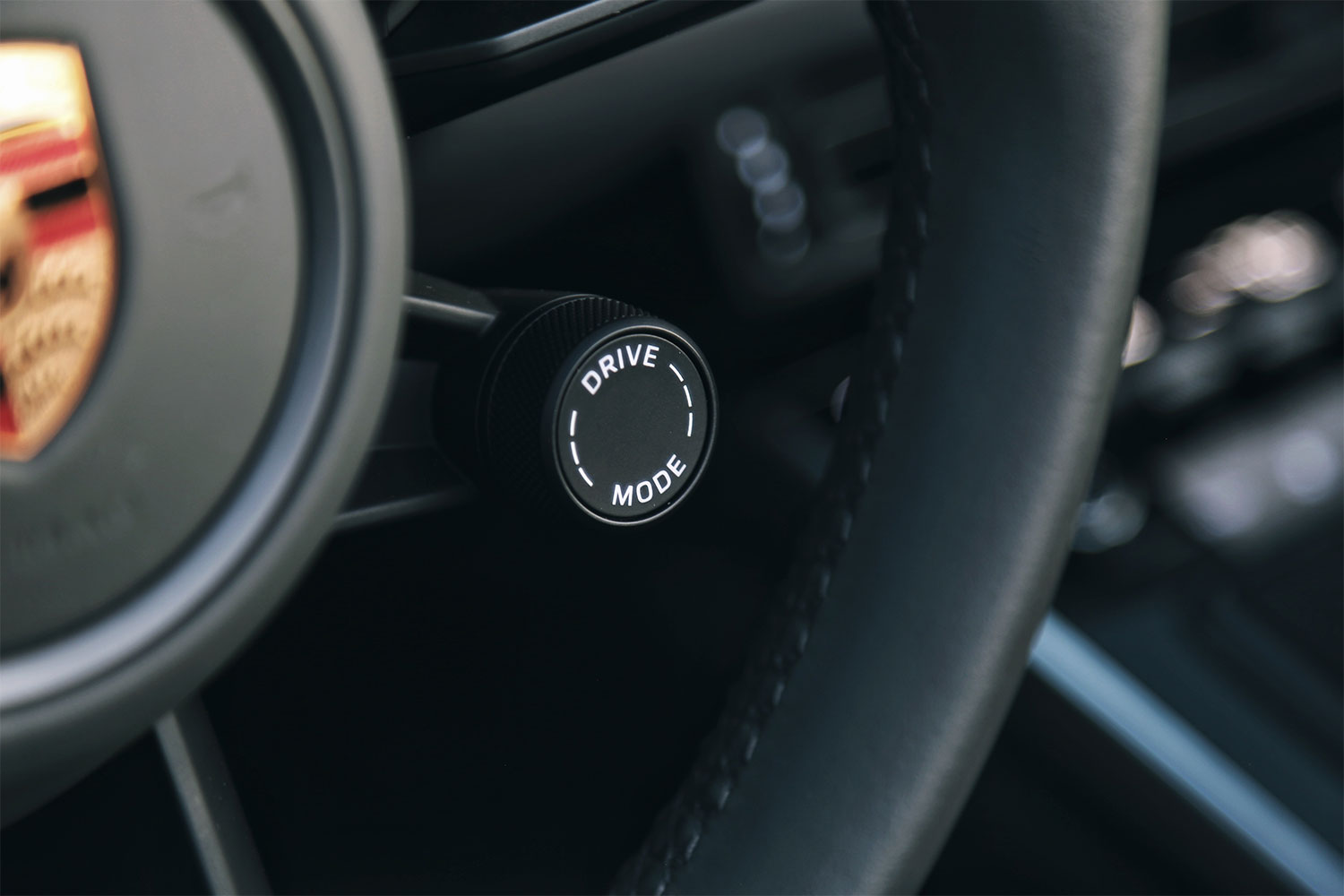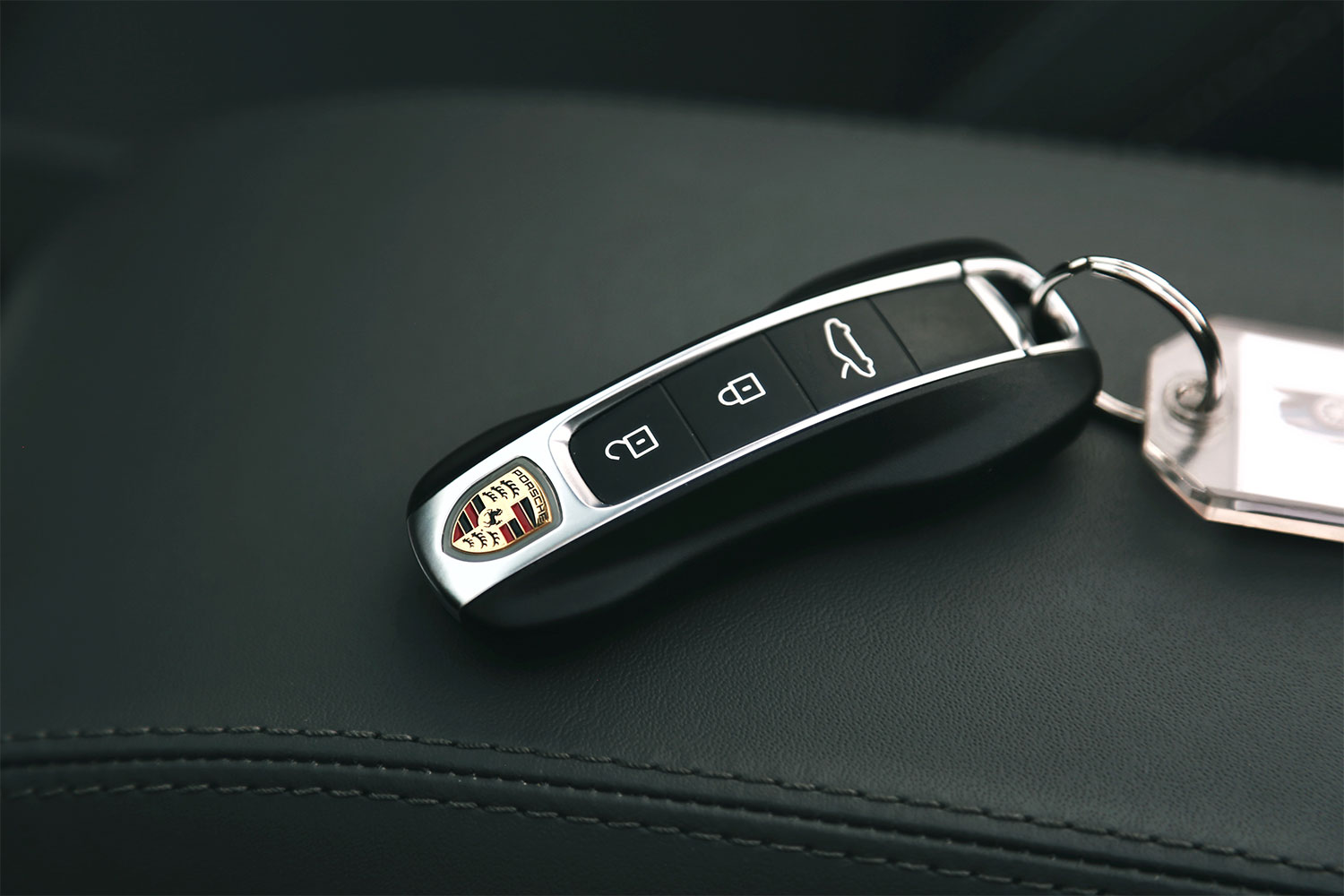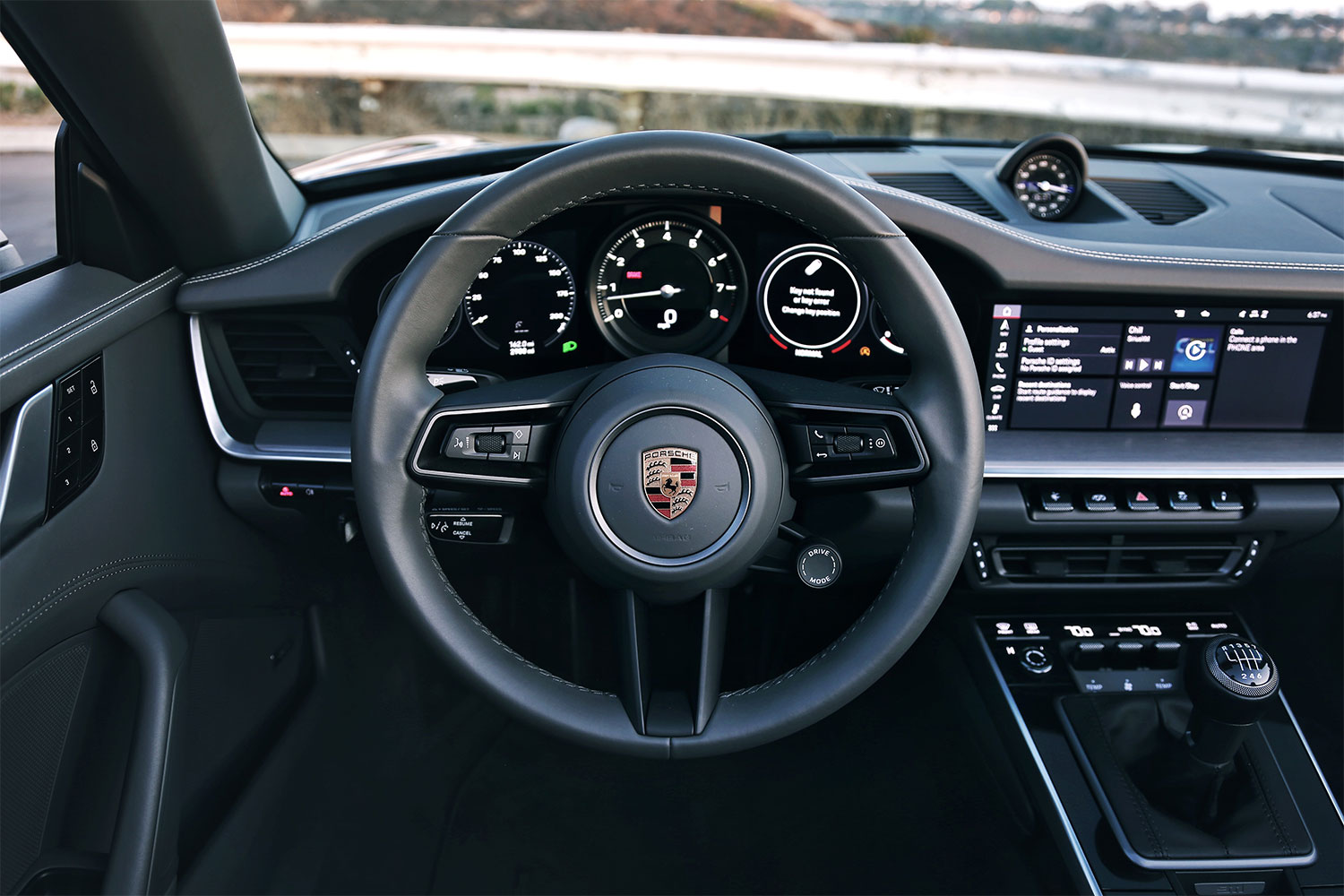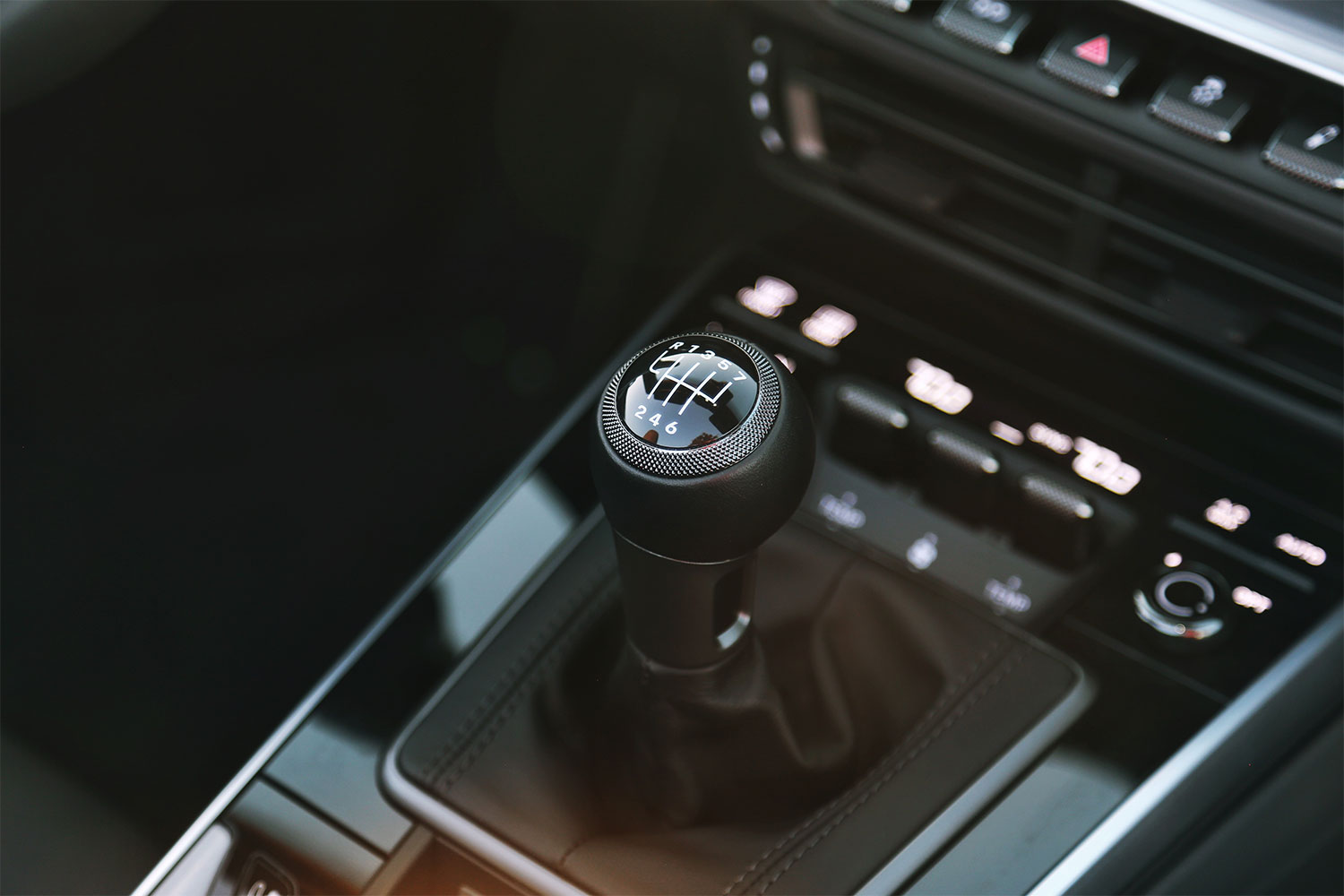Perhaps the most iconic shape in the automotive world is that of the Porsche 911 Carrera. Identified by a gently tapering roofline that flows directly into a curved rear end, the 911 Coupe has not deviated from this design in its 57 years of production. To an enthusiast, the Carrera silhouette is sacred.
How, then, should we reconcile the Cabriolet version of the sports car world’s poster child? Is it less of an icon with a folding lid? By rigid interpretation, perhaps – but a fixed roof isn’t all that compels Porsche purists.
The other, equally essential components of a 911 include its flat-six engine mounted in the rear, telepathic steering, and precise transmission. Though each of these elements have evolved over the years – turbochargers now feed the flat cylinders, hydraulics have yielded to electronics within the steering system, and the majority of Carreras sold utilize dual-clutch automatic gearboxes – their marching orders remain the same: Deliver the best possible driving experience.
Unless, of course, we’d rather relax. The 2020 Porsche 911 Carrera S Cabriolet lowers its fabric roof in 12 seconds to welcome the sun, raises its wind baffle to quell turbulent air, conforms to driver dimensions with 18-way adjustable leather seats, and readies its adaptive dampers to soak up road imperfections. If this were the PDK version, we wouldn’t even have to change our own gears.
But it isn’t. This car is equipped with the optional seven-speed manual transmission – a rarity among contemporary performance cars and a refreshing reminder of the car-and-driver connection. Better still, this gearbox isn’t a piece of half-baked nostalgia, it’s as refined as you’ll find in any car on sale. Precise throws, notchy engagement, closely stacked pedals for ideal heel-toe-downshifts, and a perfectly sized shifter lay the foundations for a love affair. And for those out of practice or new to the manual religion, the 911’s clear friction point and stall auto-ignition take the fear out of rowing your own gears.
Running the 443 horsepower Carrera S to its 7,400 rpm redline grips our heart as if awaiting the answer to a marriage proposal. “Will you…drive me wild?” Yes.
A manual limited slip rear differential ushers the 911 through corners quickly and flatly while the steering dictates the exact amount of effort required to negotiate a curve. Strong bite from the brakes and a sure pedal load us with confidence as we scrub speed later and later before turning. Suddenly, our favorite stretch of road just doesn’t seem long enough.
Automotive performance looks very different today than it did when the 911 first greeted the world, yet Porsche’s finger has never left the pulse. Whatever may change about tomorrow’s Carrera – roofline, transmission, powertrain, or otherwise – it will remain the purest possible expression of driving pleasure.
